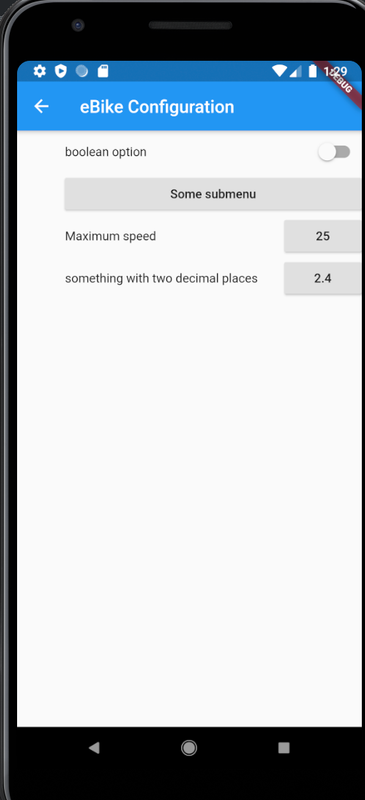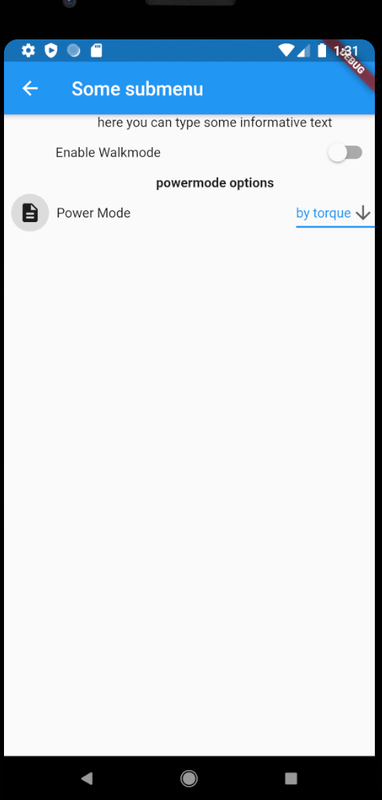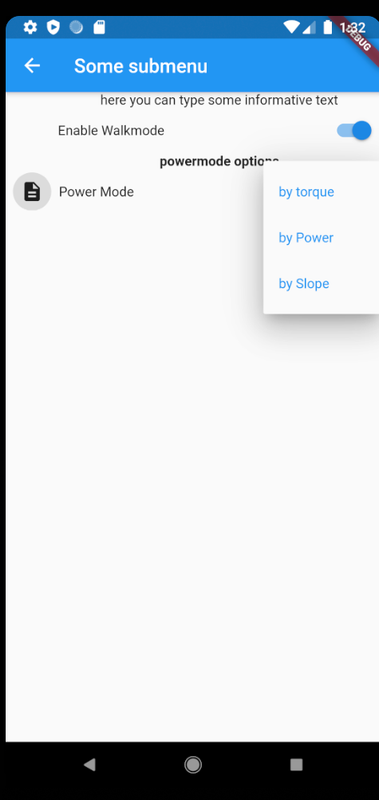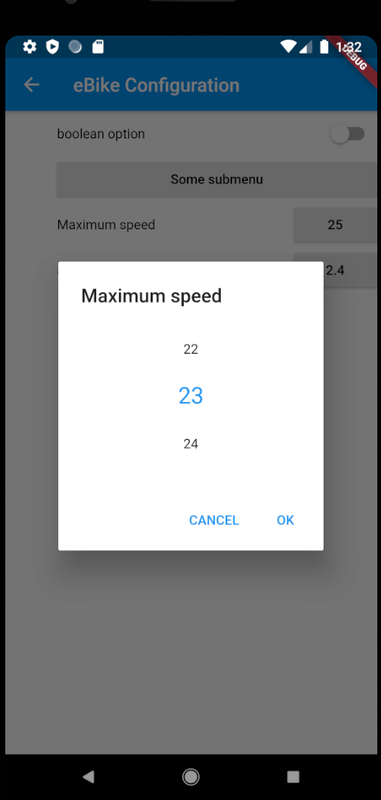{
"version": 0.1,
"config": [
{
"type": "bool",
"label": "boolean option",
"key": "enable_walkmode",
"value": false
},
{
"type": "menu",
"label": "Some submenu",
"key": "some_submenu",
"children": [
{
"type": "text",
"label": "here you can type some informative text"
},
{
"type": "bool",
"label": "Enable Walkmode",
"key": "enable_walkmode",
"value": false
},
{
"type": "title",
"label": "powermode options"
},
{
"type": "enum",
"label": "Power Mode",
"key": "power_mode",
"value": "TORQUE",
"choices": {
"TORQUE": "by torque",
"POWER": "by Power",
"SLOPE": "by Slope"
},
"info": "Some description\nof the power modes\n\nRTFM!"
}
]
},
{
"type": "number",
"label": "Maximum speed",
"key": "max_speed",
"value": 25,
"min": 0,
"max": 50,
"step": 1
},
{
"type": "number",
"label": "something with two decimal places",
"key": "some_decimal",
"value": 2.4,
"min": 0,
"max": 5,
"decimal": 2
}
]
}







